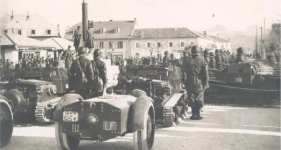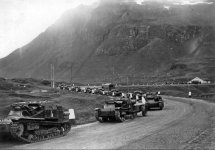Kustosz2137
New Member
I'm looking for TOE of Italian light tank (tankettes) battalions that were used in 1940 invasion of Egipt:
XX btg. "Randaccio" of Comando Truppe della Tripolitania,
XXI btg. "Trombi" of Comando Truppe della Cirenaica,
LX btg. per Divisione Sabartha,
LXI btg. per Divisione Sirte,
LXII btg. per Divisione Marmarica,
LXIII btg. per Divisione Cirene,
and IX btg. per Divisione Libica (not sure which one tho).
XX btg. "Randaccio" of Comando Truppe della Tripolitania,
XXI btg. "Trombi" of Comando Truppe della Cirenaica,
LX btg. per Divisione Sabartha,
LXI btg. per Divisione Sirte,
LXII btg. per Divisione Marmarica,
LXIII btg. per Divisione Cirene,
and IX btg. per Divisione Libica (not sure which one tho).



